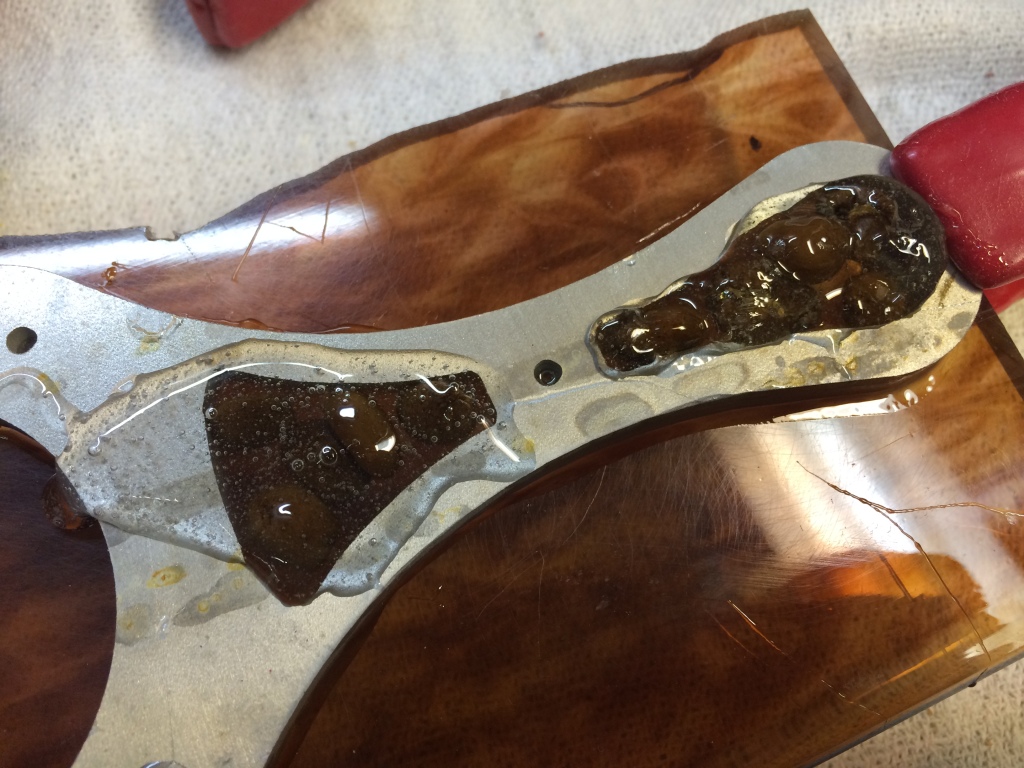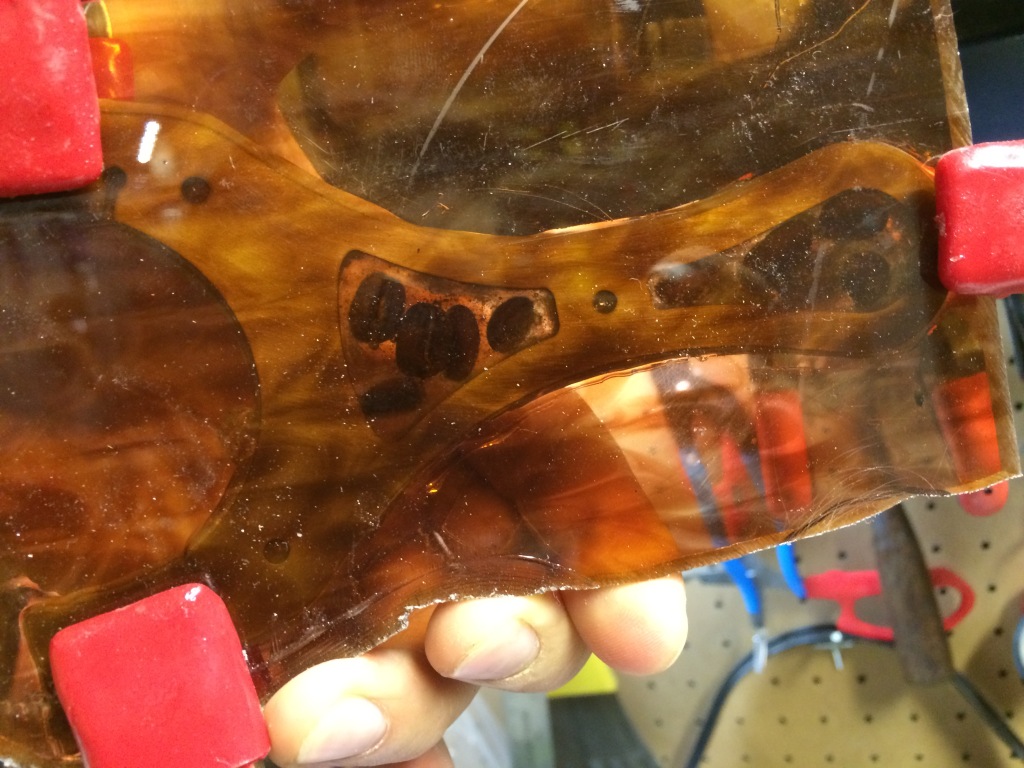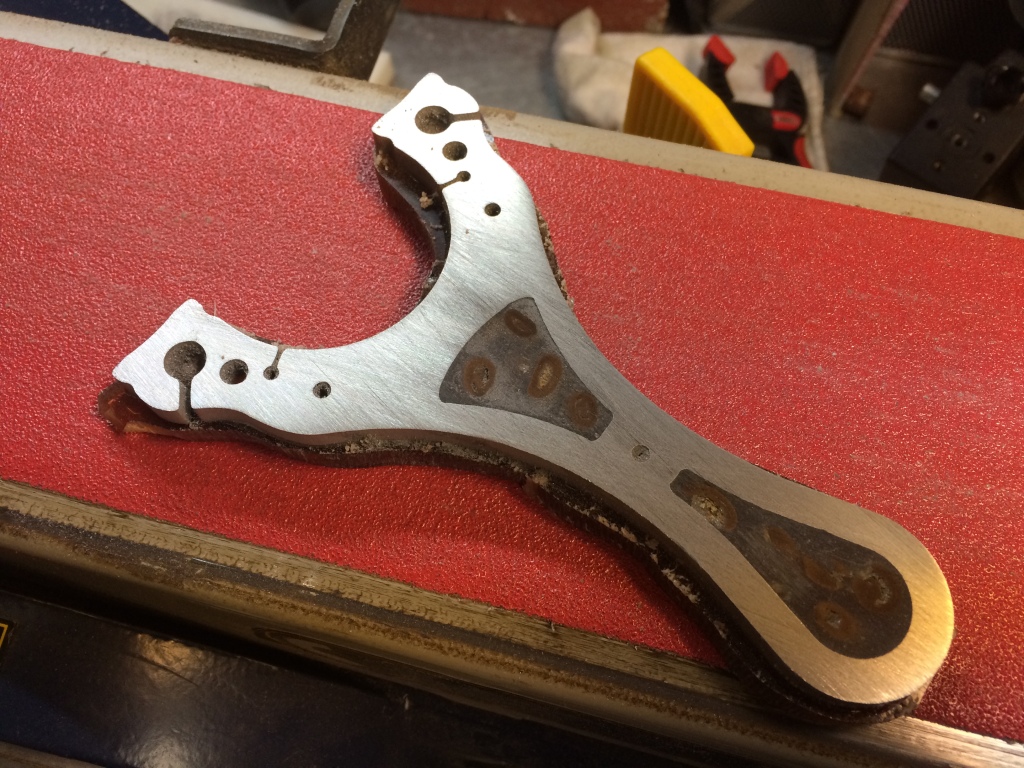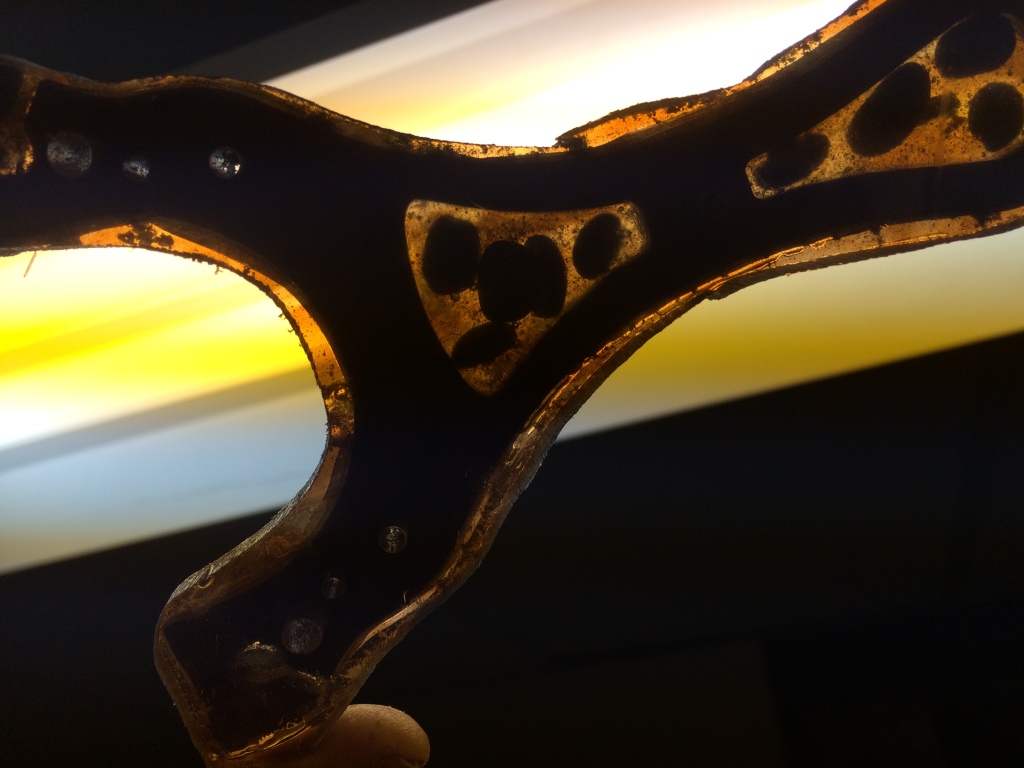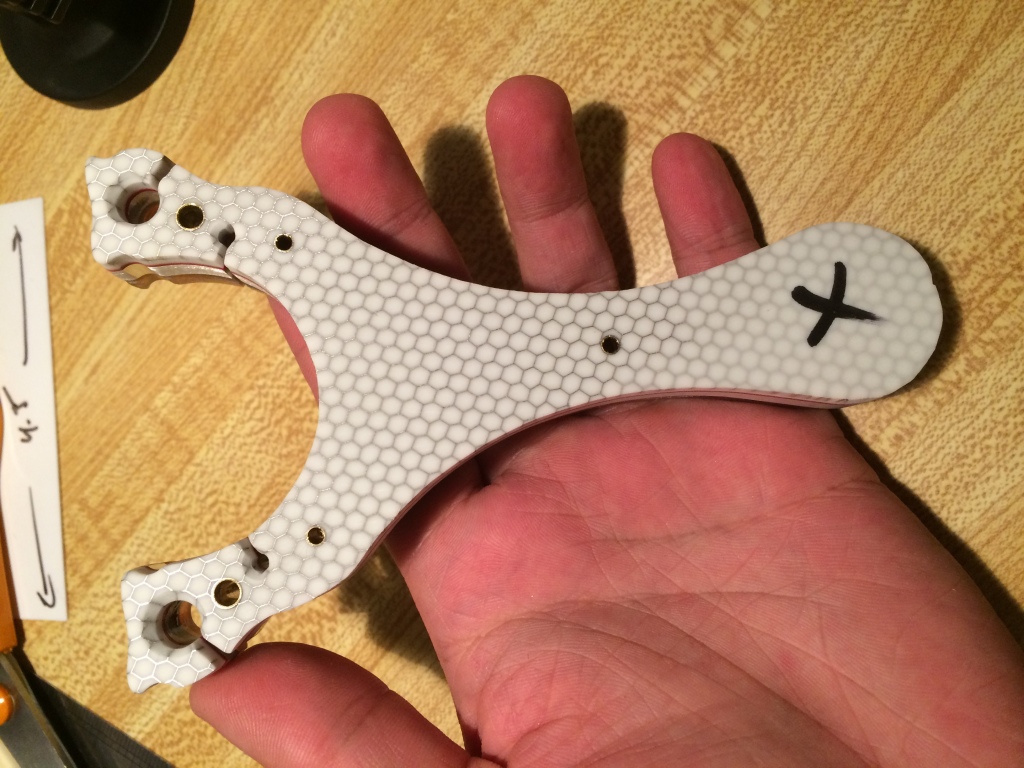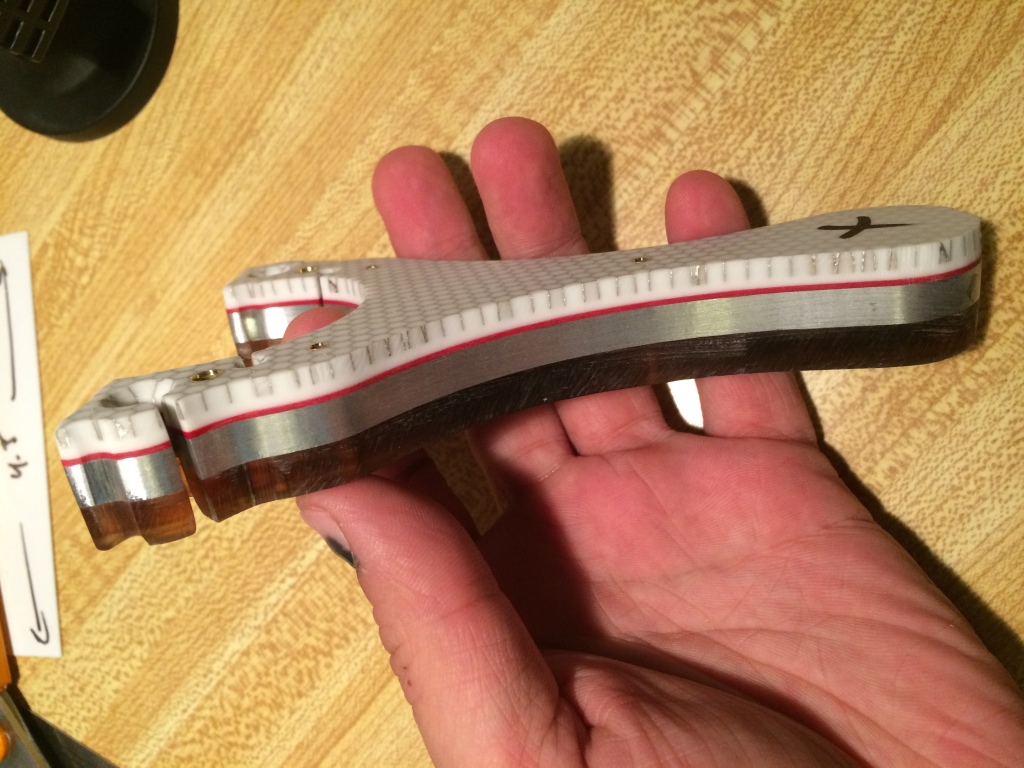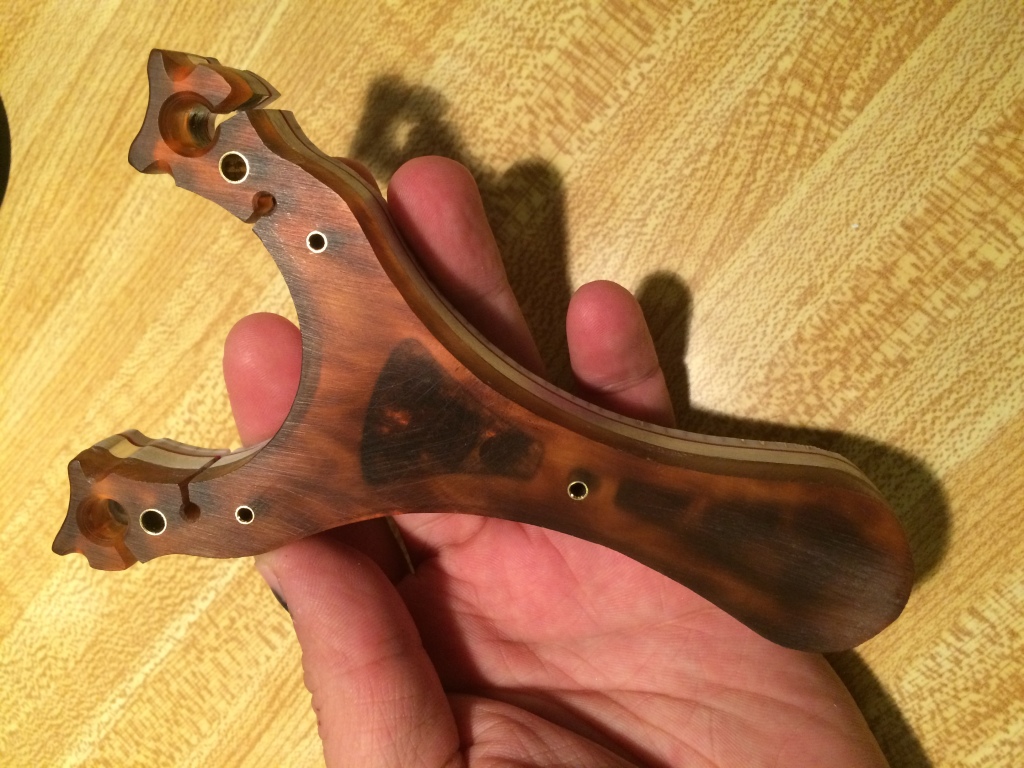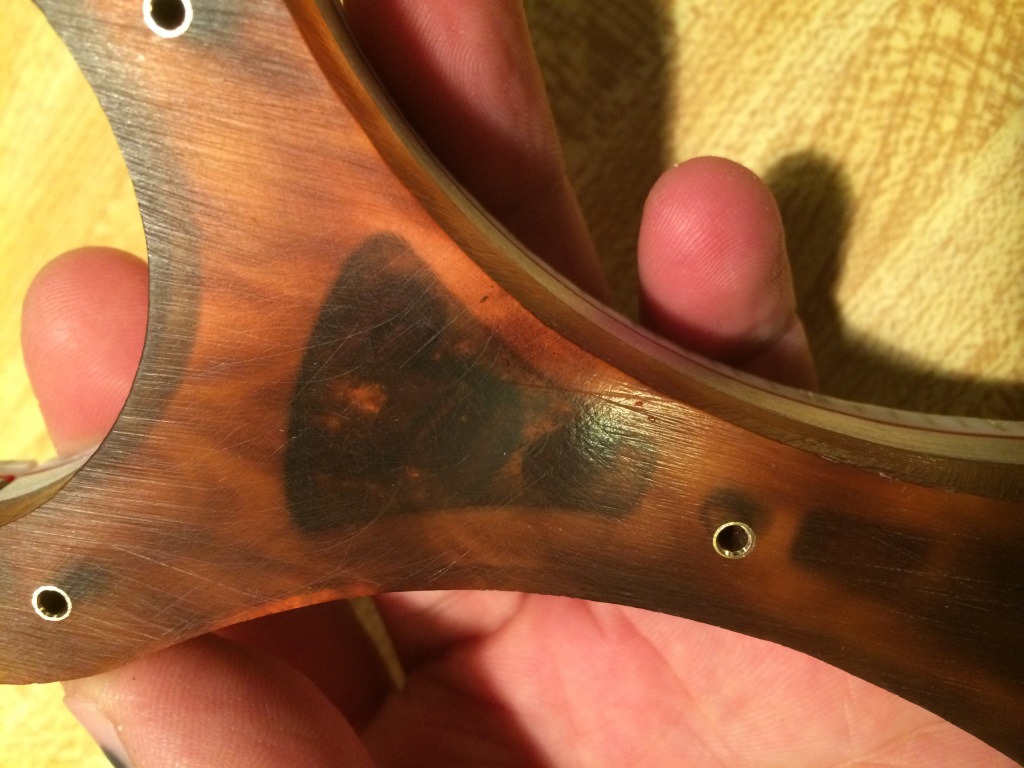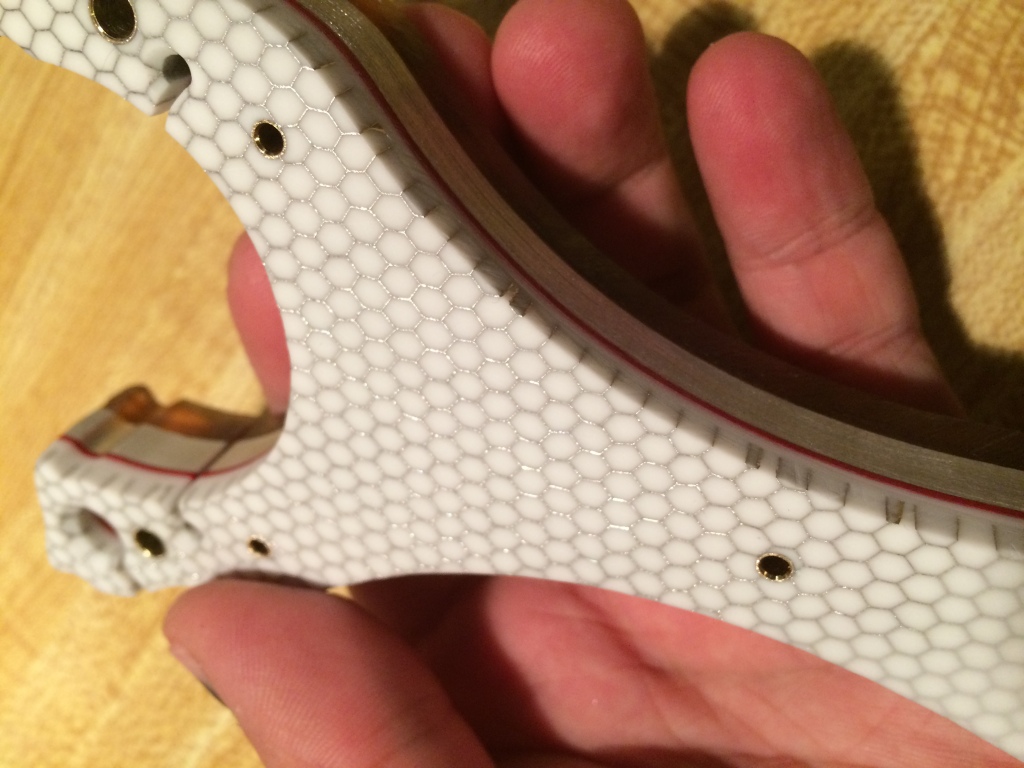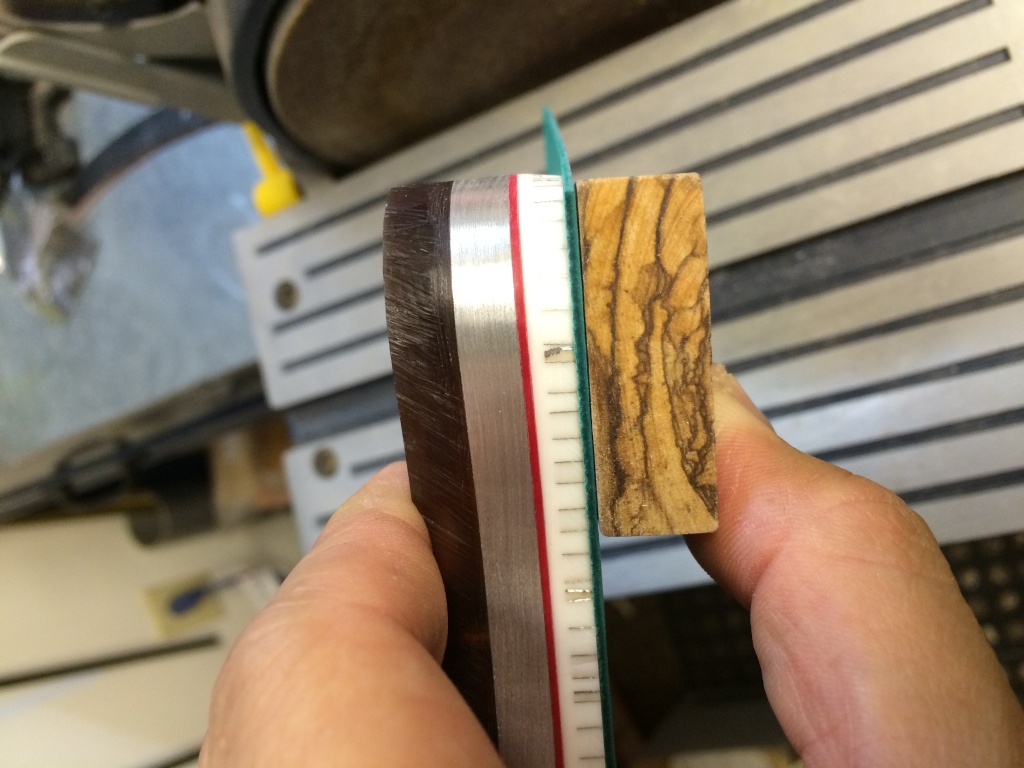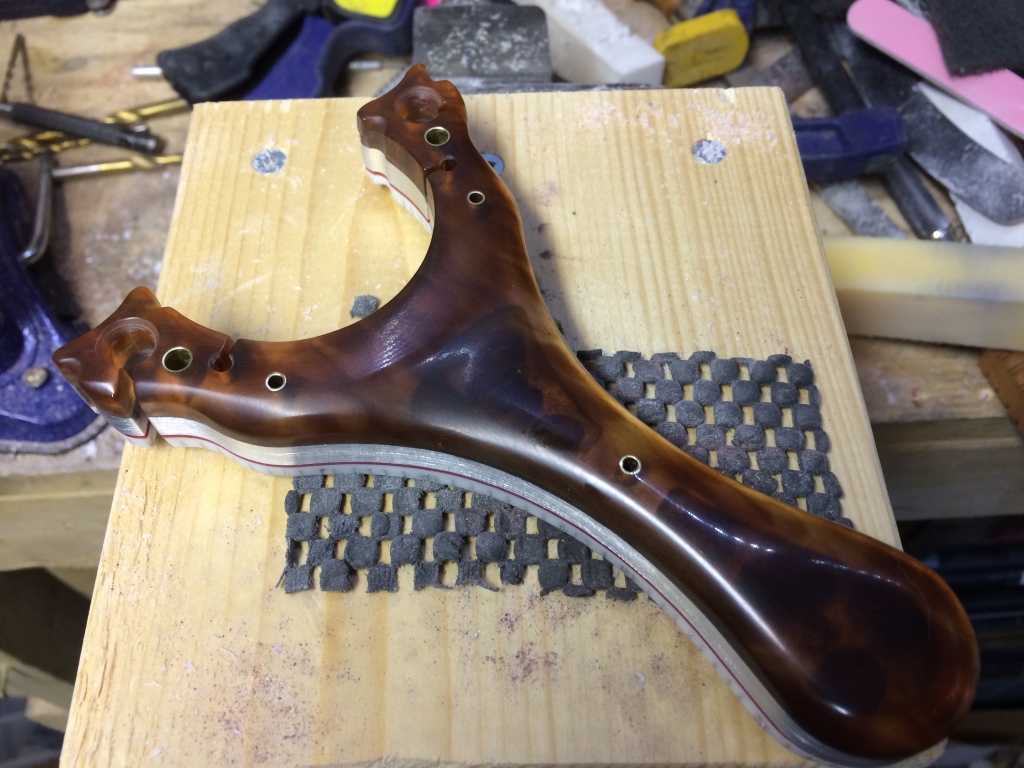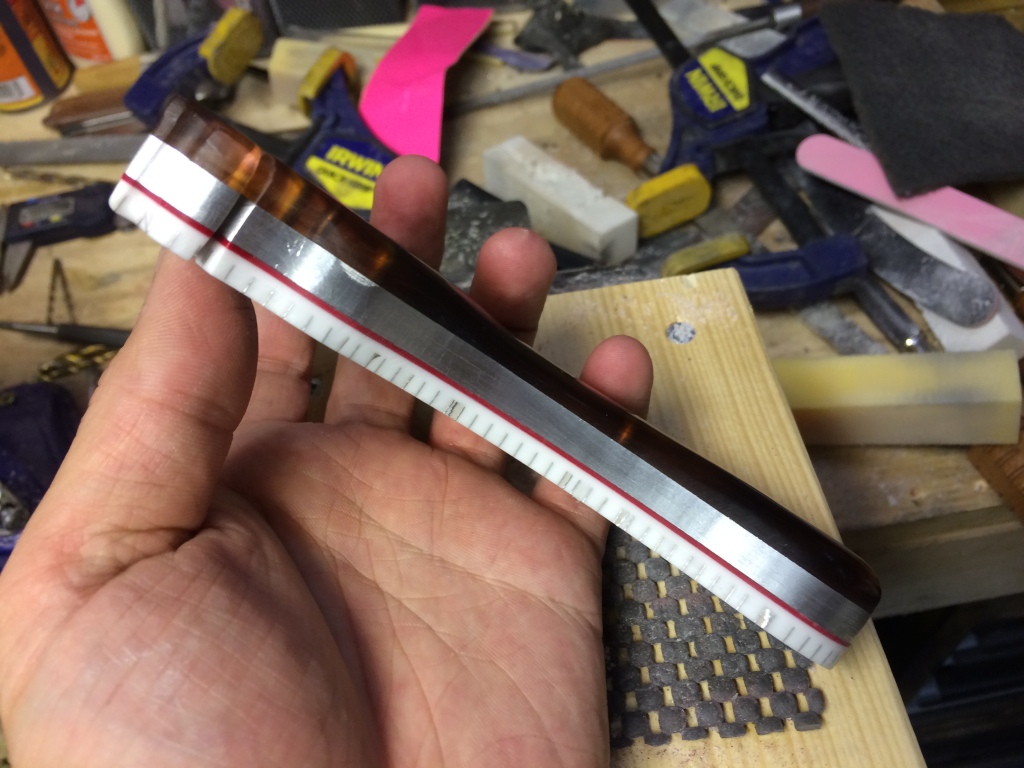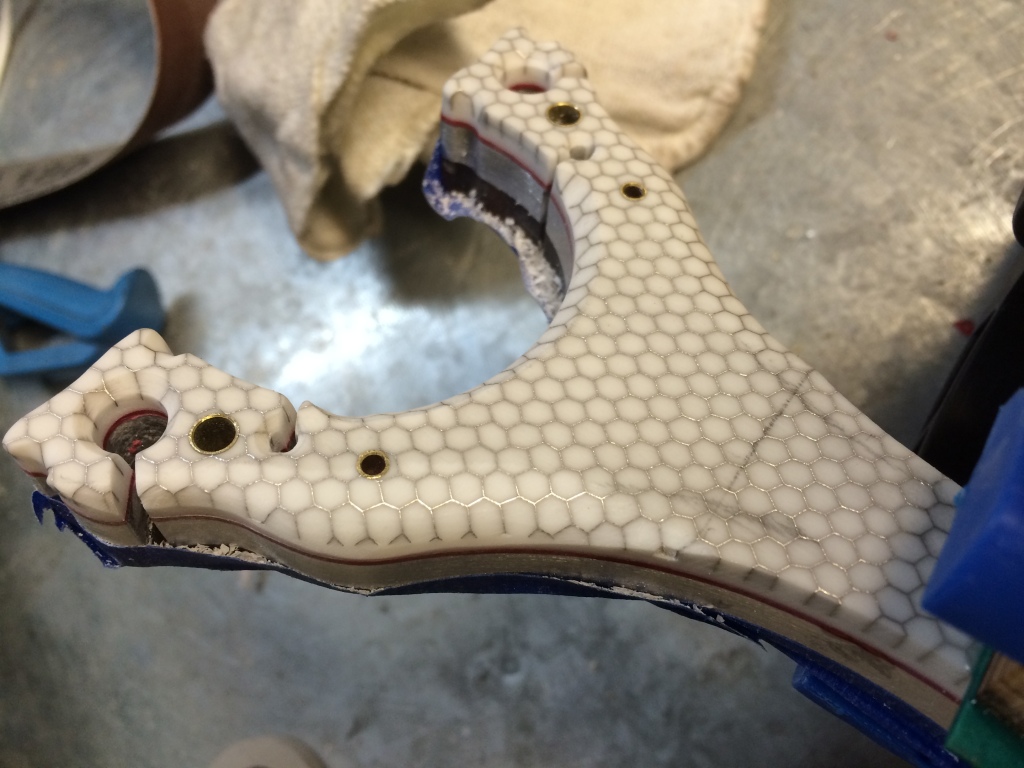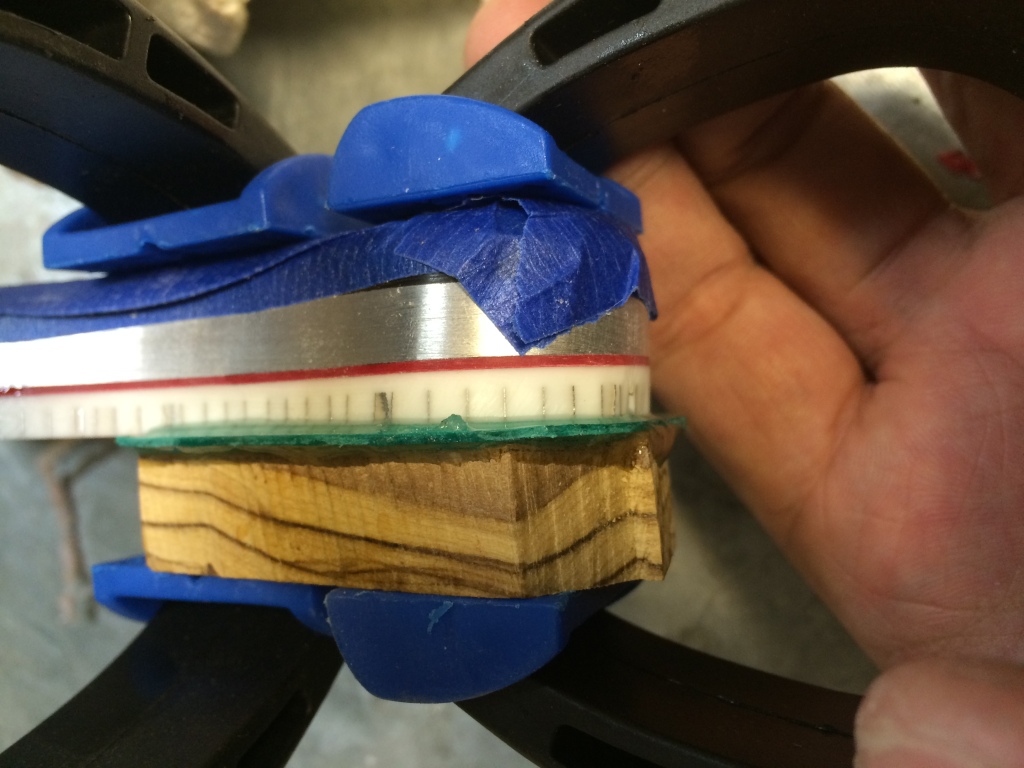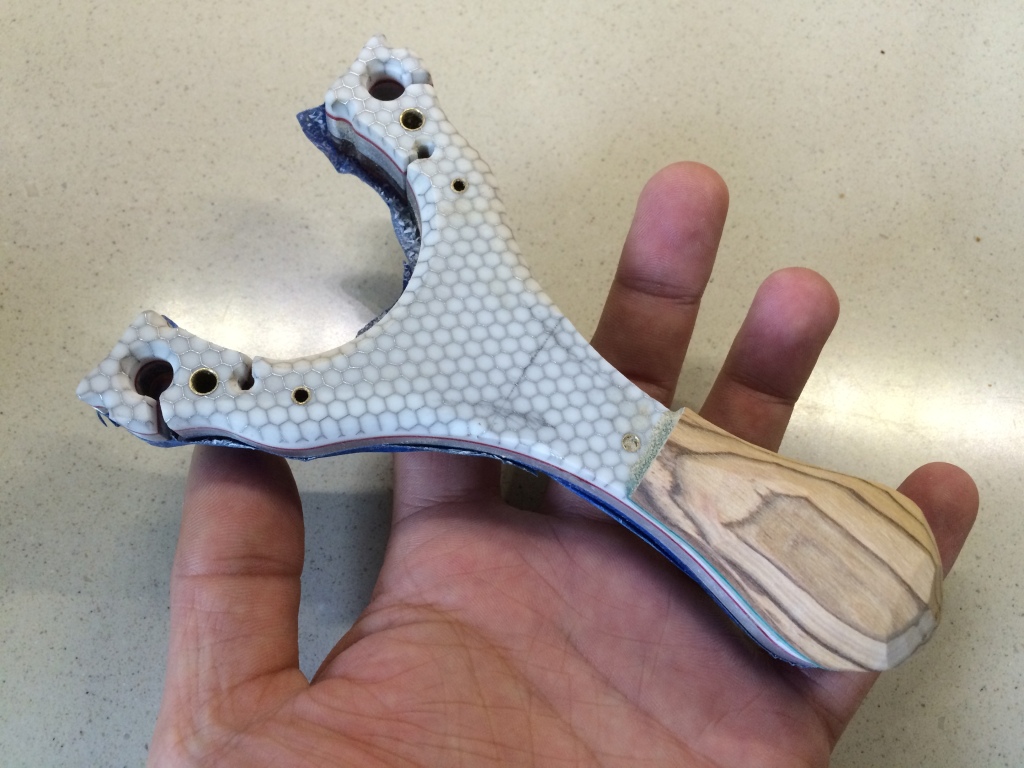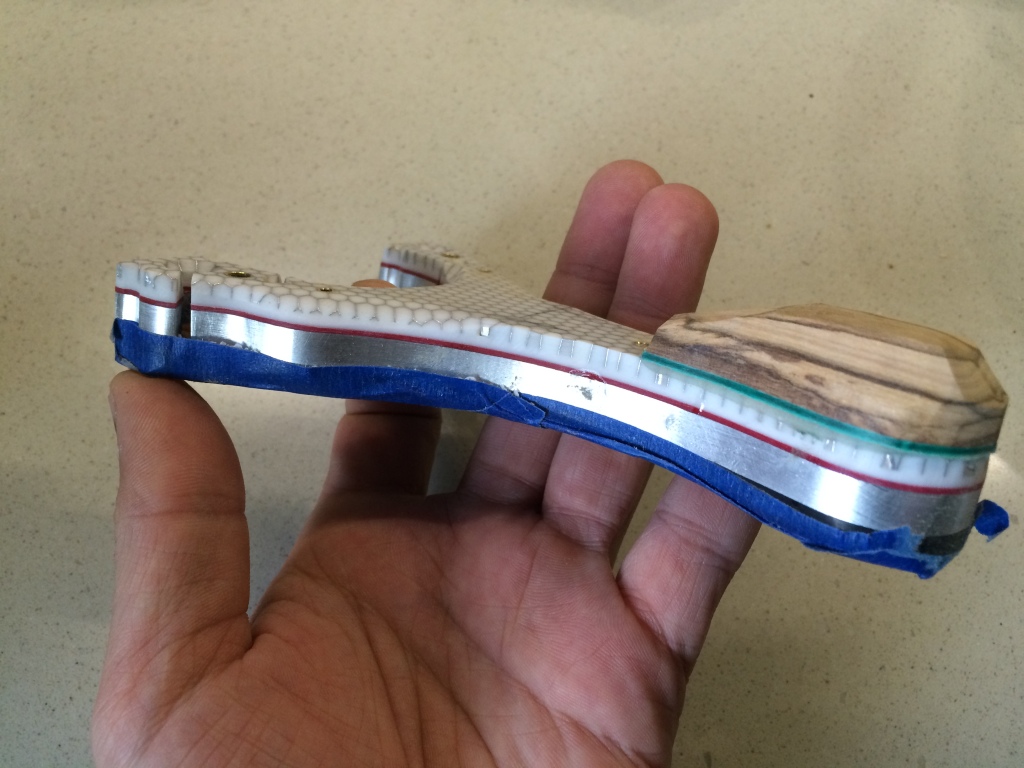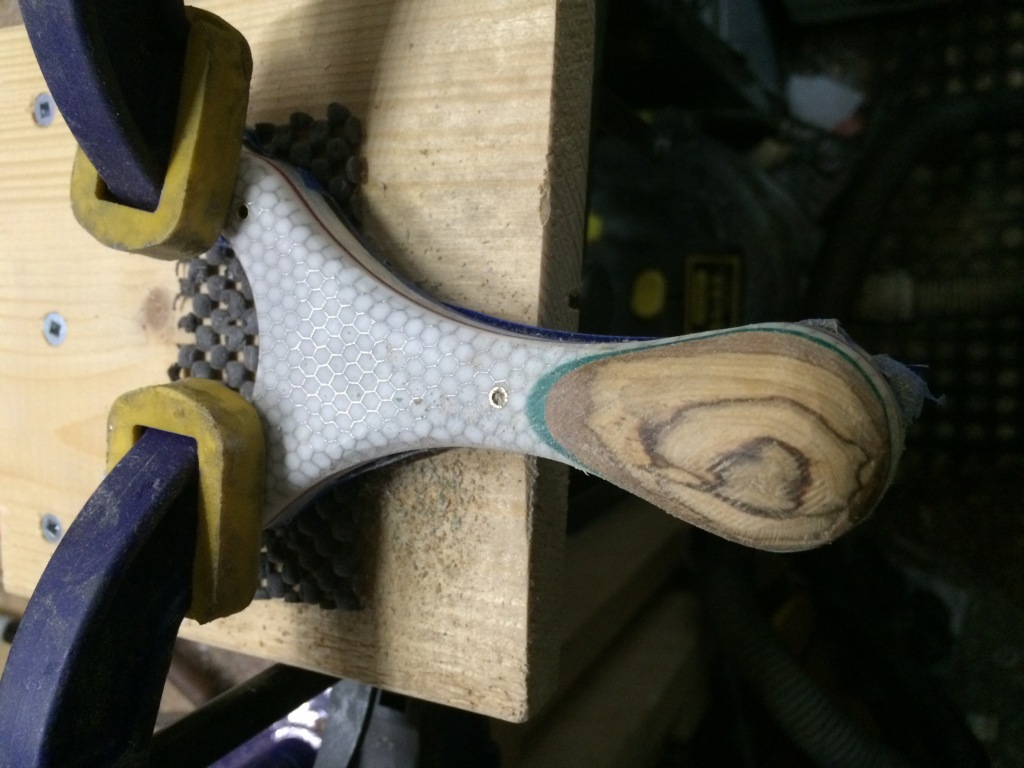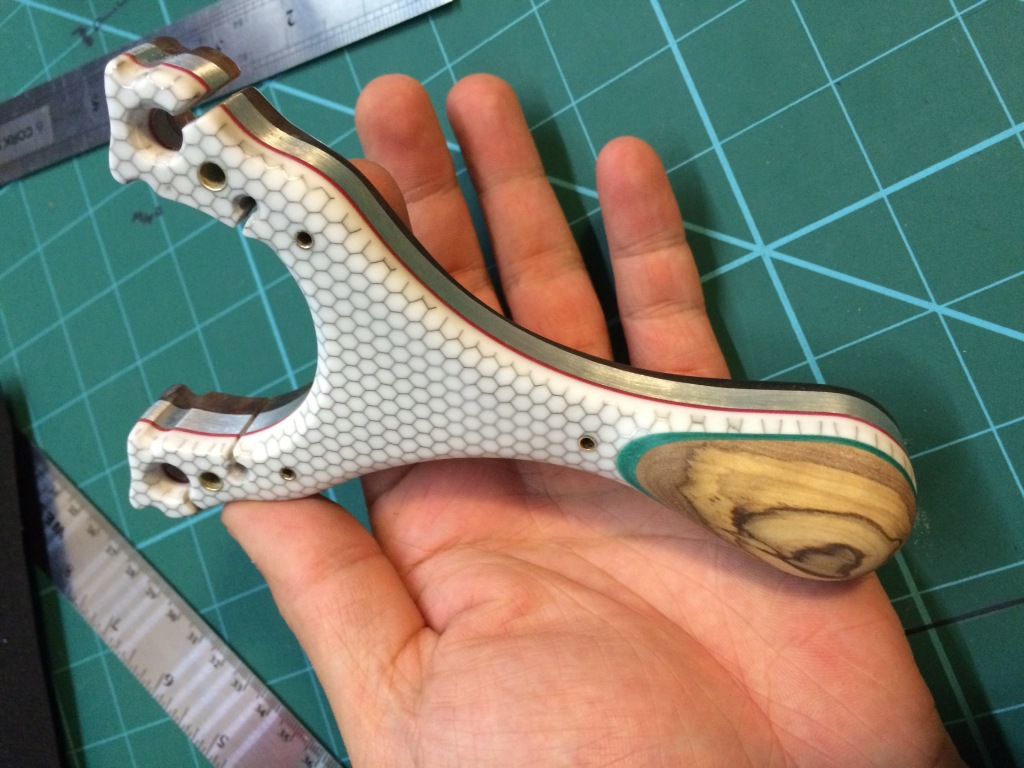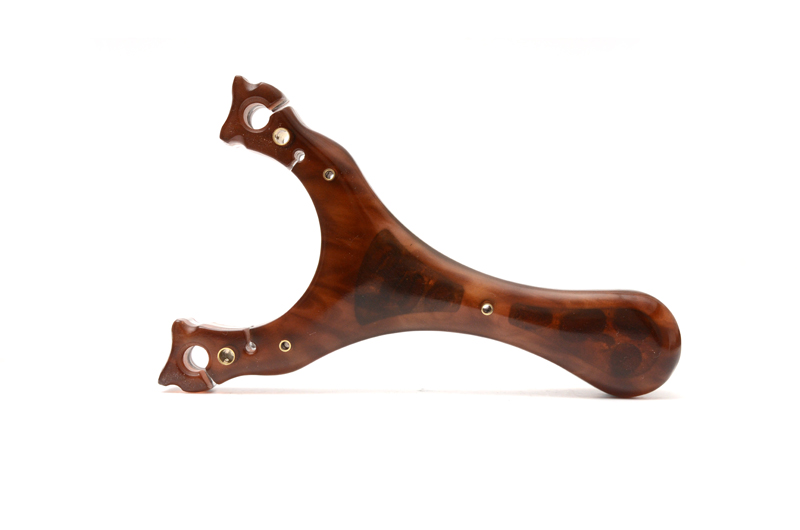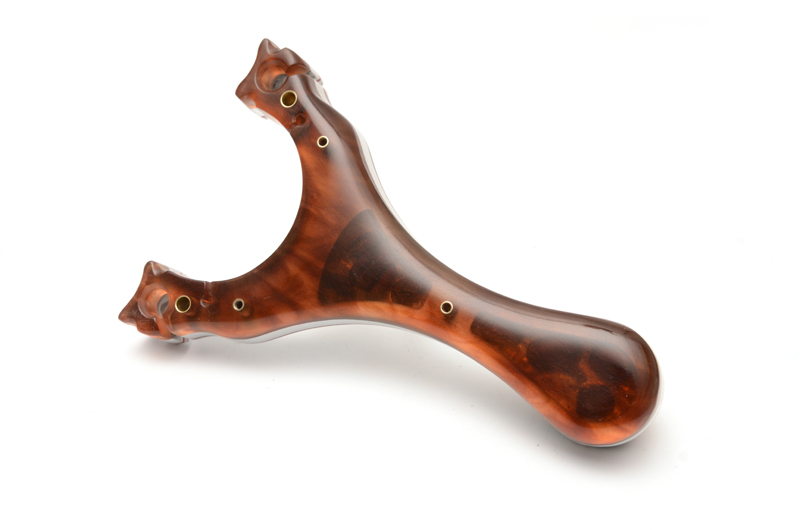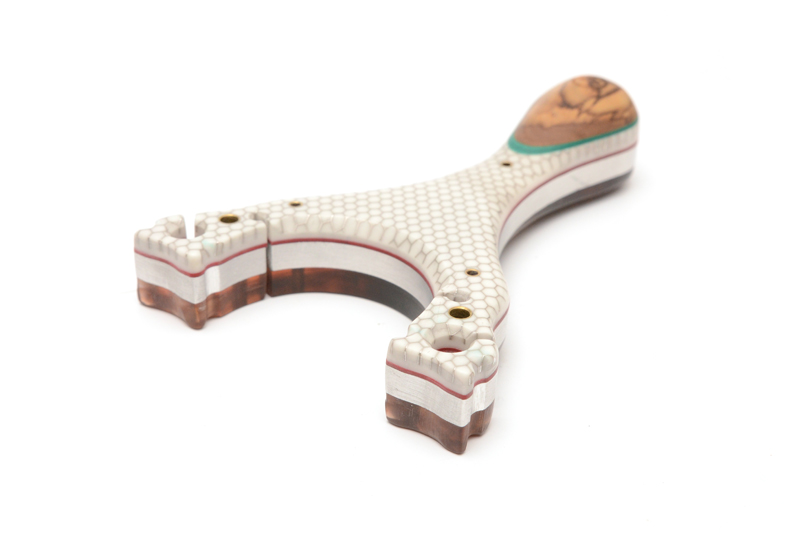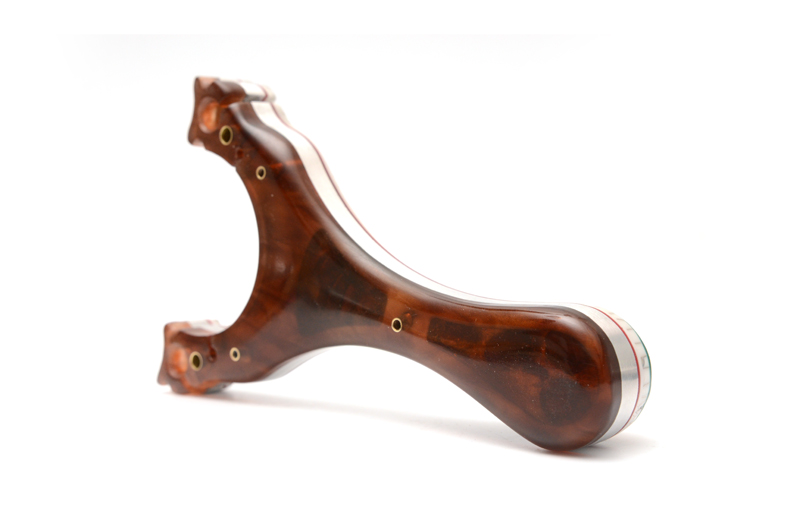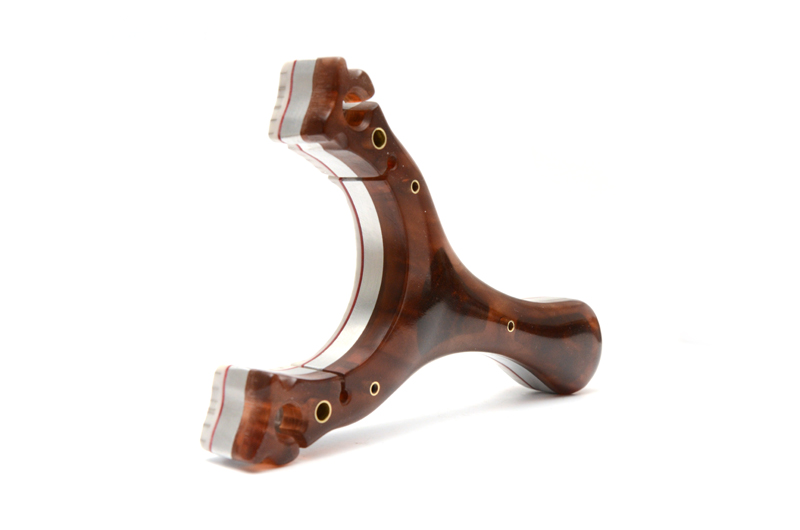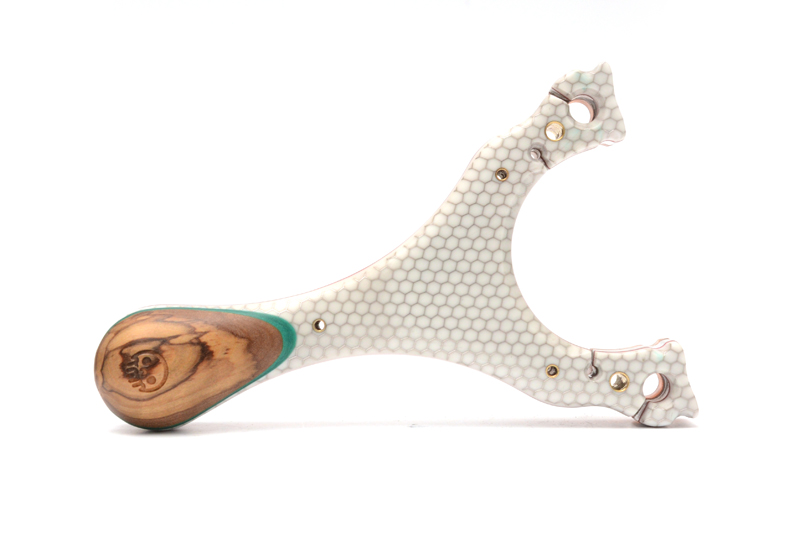
Since I started making slingshots, there have been a lot that have gone out the door. More and more I have less and less time to appreciate them before they do leave my shop. It was time to build one for me and me alone, one for the ages, one for me to take to tournaments and show off my skills as craftsman. I call this build…the Italian Job.
This all started when I came across a unique material, a vintage, hand cast acetate tortoise shell made by the famous Italian house, Mazzucchelli. This amazing fluid, subtly textured, semi transparent material is common used for eyewear but I managed to acquire a few sheets at 8mm thick. This was the anchor to my flagship slingshot.
I used one of my most comfortable frames, a modified Mule (designed by Mark Toddy) I like to call the Three-Trick-Pony. The tips are able to use three types of bands, hence its three trick monicker. The 1/4″ thick aluminum frame was scuffed and then tortoise shell was laminated onto it. I then mixed up some more epoxy and incorporated some espresso beans which filled the hollow voids in the aluminum core. This was the 2nd nod to the Italian theme.
Once the epoxy had cured, a quick sanding on the belt sander made the cast beans flush with the surface of the frame.
After trimming and sanding the tortoise shell flush with the frame’s perimeter, I chose to use another very unique material: C-Tek. This white C-Tek was chosen as I felt it mimicked the hexagonal ties found in many Italian cafes. It was at this time, the pin holes where filled with brass tubing.
Separating the C-tek is a red vulcanized fiber spacer, this will play into the theme as you will see later.
The pattern of the tortoise shell beginning to show up.
The espresso beans are barely visible, but after some buffing, they will be easily seen.
A close up of the C-Tek. The opaque white with aluminum honeycomb really does come out looking very nice.
For a better ergonomic grip, a pinky stop made of highly figured olive wood separated by another fibreboard space, but in emerald green. Completing the Italian national colours, the green spacer helped interface the natural wood material and the synthetic C-tek.
I didn’t take too many process pics of the shaping of the tortoise shell, but I used my favourite shaping tools, an Iwaski file followed by an ultra fine 1/2 round file then various grits of sand paper till I hit 1000. I then use a hard buffing wheel with some green compound and buffed it to a dull shine.
In certain lights, the cast beans are much more visable. You can also see how I used some tin foil to back the casting to prevent the red from showing up.
Then it was time to shape the C-Tek. The soft resin behaves poorly to power tools since it heats up very quickly so again, it was time to use the Iwasaki carving files and various grits of sand paper. I could only do so much shaping as the epoxy for the pinky stop was still curing.
Before rough shaping of the pinky stop, the corners and bulk of the olive wood was bandsawed off.
The olive wood sands very nicely as it is very oily and dense, so the belt sander was a good way to do a very rough shaping into a tear drop shape.
There is no really fast was of doing a palm/pinky swell. Manual tools again come to aid, as the roundness of the pinky swell took shape, the swirly grain also revealed itself.
After some high gri sanding, and then some light buffing, this slingshot is complete.
Sexy archive photos, note the Metro Grade skull etched into the pinky swell
Thanks for reading yet another slingshot build.
-Eric
